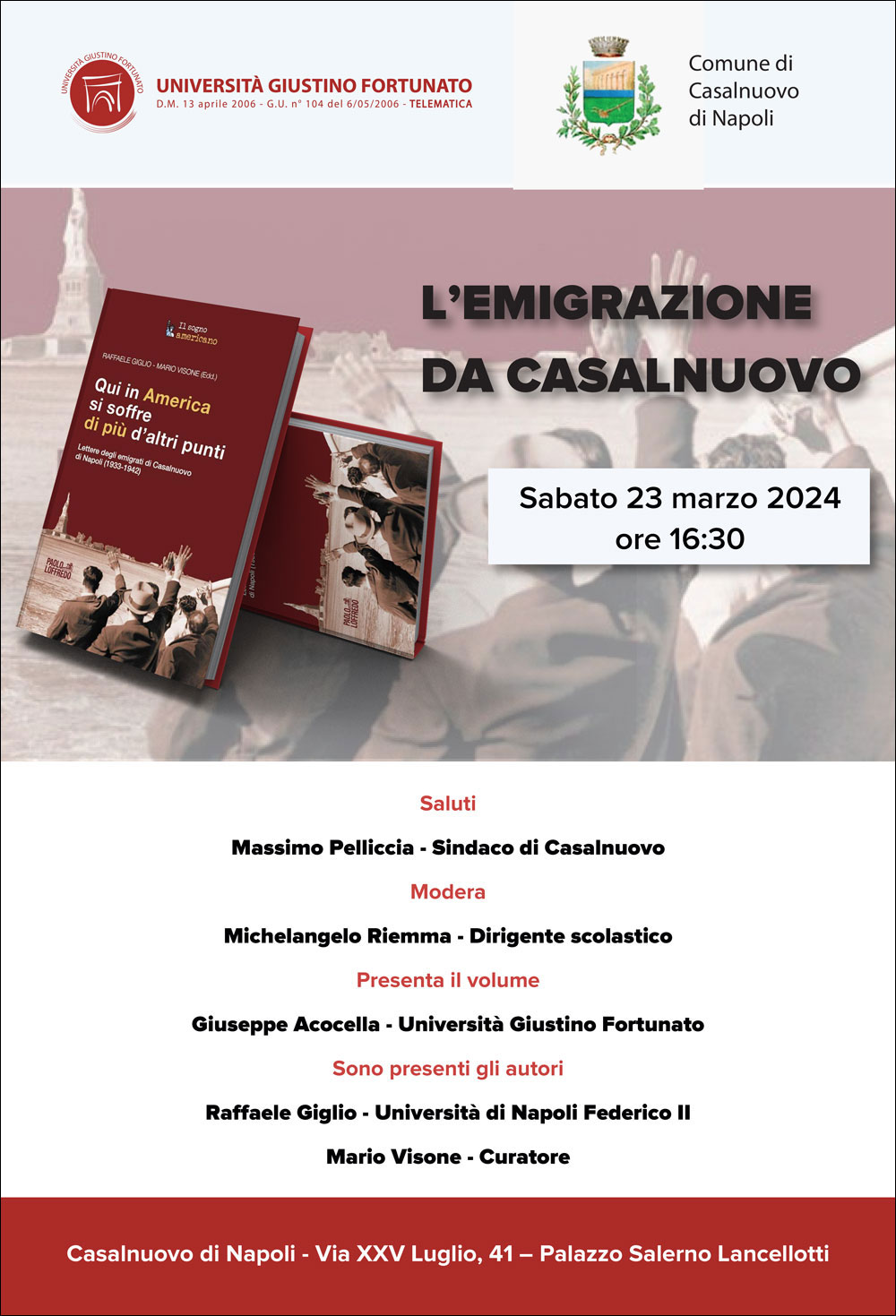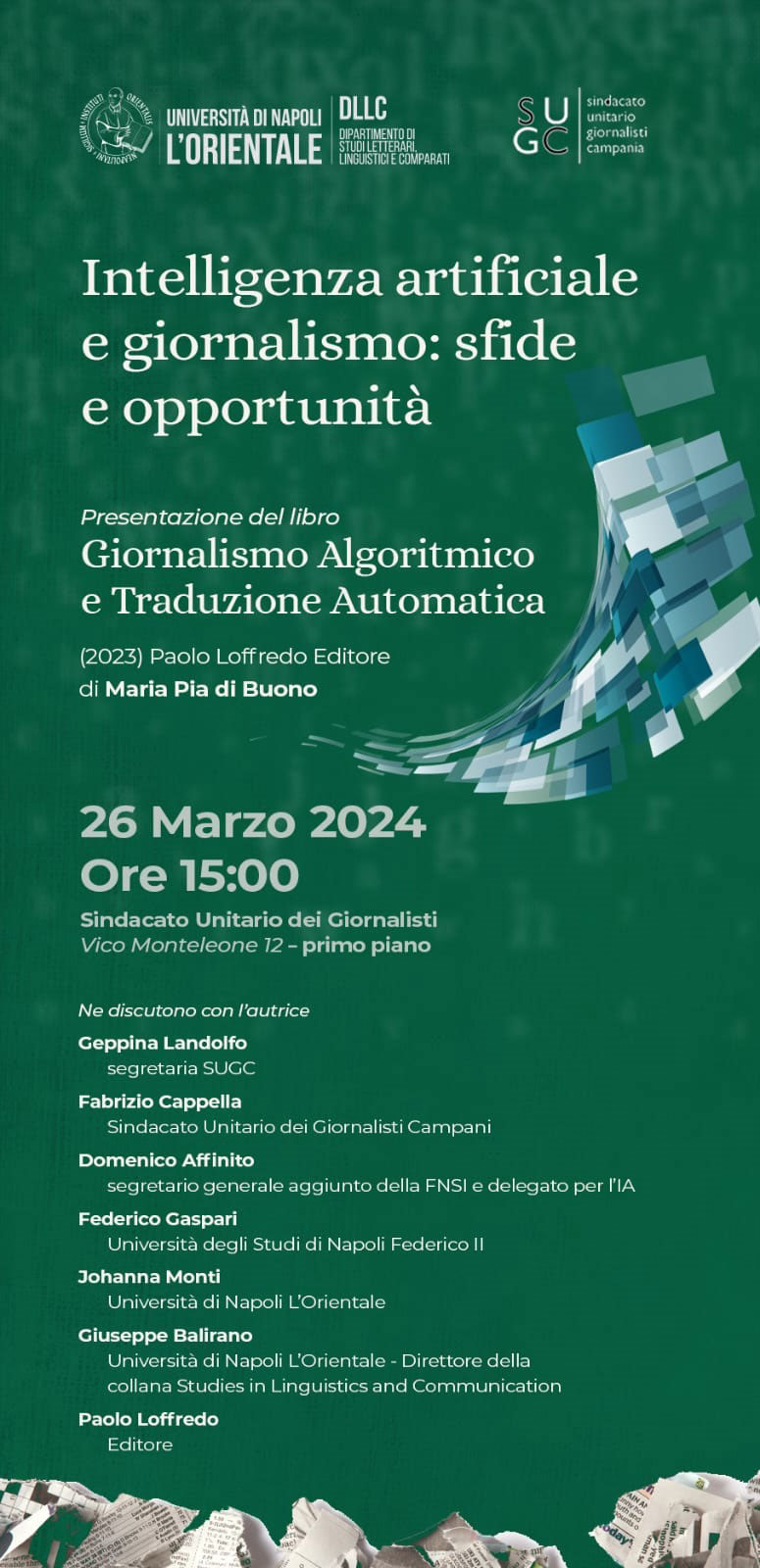 Paolo Loffredo, sixth generation of a large family of publishers and booksellers engaged in the production and distribution of books since the late nineteenth century, creates in 2012 the new editorial company Paolo Loffredo Editore. The historical site was until the '80s in the heart of the historic centre of Naples in Via San Biagio dei Librai, lower Decumano and also known as the SpaccaNapoli.
Paolo Loffredo, sixth generation of a large family of publishers and booksellers engaged in the production and distribution of books since the late nineteenth century, creates in 2012 the new editorial company Paolo Loffredo Editore. The historical site was until the '80s in the heart of the historic centre of Naples in Via San Biagio dei Librai, lower Decumano and also known as the SpaccaNapoli.
At the beginning of the twentieth century, Giuseppe Loffredo decided to add book selling to the book production, which definitively imposed itself after World War II with the publication of manuals for the University and for the School that succeeded in establishing themselves soon throughout Italy.
LAST EVENT
"L'emigrazione da Casalnuovo"
23 Marzo 2024 - Palazzo Salerno Lancellotti Ateneo, via XXV Luglio, 41 - Casalnuovo (NA) - ore 16,30

--------------------------------------------------------------------
"Intelligenza artificiale e giornalismo: sfide e opportunità"
26 Marzo 2024 - Sindacato Unitario dei Giornalisti - vico Monteleone, 12 - primo Piano - Napoli - ore 15,00

L'eroe fuori luogo
Language: Italian
Publisher: Paolo Loffredo Editore Srl

Description
L'Eroe fuori luogo
The narrative nucleus of “Gerusalemme liberata” is the siege of the city.
The essential, expositive and spatial structure of the poem therefore takes shape in a constant attempt made by the heroes of going beyond certain limits and entering in the fortified city. The epic narration of the war opposes love, which a natural space, far from the centre of the narration and characterized by pastoral poetic elements.
Natural space is often misleading in this opposition, in which the epic space matches chivalrous values. But yet, the bucolic environment is a metaphor to show complex existential and conceptual routes. It is well shown in the episode of Erminia’s escape, in which the young woman is led by passions which are difficult to deal with. She breaks the balance, bringing out Tancredi and becoming the protagonist of one of the most discussed episodes in Italian literature.
The analysis of space structure shows the mechanism behind the heroes’ adventures, which are the “action engine of the poem” (going beyond limits, getting away from the centre of the battle, the absence of the hero).
Tasso’s work is the most representative epic poem from the XVI century and in the following eras had a great fortune even in figurative arts. The volume is therefore closed with a collection of paintings about this theme, to which is dedicated the second part of this monography.



